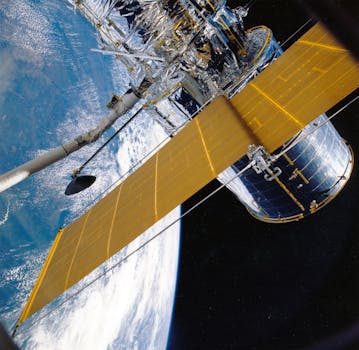
Navigating Change: The Latest Trends in Satellite Telecommunications and Their Impact
Satellite telecommunications are undergoing significant changes, driven by advances in technology, shifting consumer demand, and the need for greater connectivity. As the industry continues to evolve, it’s essential to understand the latest trends and their impact on the market.
Introduction to Satellite Telecommunications
Satellite telecommunications involve the use of satellites to transmit data, voice, and video signals over long distances. This technology has been around for decades, but recent advancements have made it more efficient, reliable, and cost-effective. Satellite telecommunications play a critical role in providing connectivity to remote and underserved areas, where traditional infrastructure is lacking.
The satellite telecommunications industry has experienced significant growth in recent years, driven by the increasing demand for mobile broadband, the internet of things (IoT), and other data-intensive applications. According to a report by MarketsandMarkets, the global satellite telecommunications market is projected to reach $7.5 billion by 2025, growing at a compound annual growth rate (CAGR) of 9.5% from 2020 to 2025.
The Latest Trends in Satellite Telecommunications
Several trends are driving the evolution of satellite telecommunications, including the adoption of new technologies, changes in consumer behavior, and the emergence of new business models. Some of the key trends include:
High-throughput satellites (HTS), which offer higher bandwidth and faster data speeds, are becoming increasingly popular. HTS are being used to support a range of applications, including broadband internet, mobile networks, and enterprise connectivity.
Another trend is the use of low-earth orbit (LEO) satellites, which offer lower latency and higher throughput than traditional geostationary satellites. LEO satellites are being used to support applications such as IoT, remote sensing, and satellite-based broadband.
The adoption of 5G technology is also driving change in the satellite telecommunications industry. 5G networks require high-bandwidth, low-latency connectivity, which satellite technology can provide. Satellite-based 5G networks are being used to support a range of applications, including enhanced mobile broadband, ultra-high-definition video, and mission-critical communications.
Impact of the Latest Trends on the Industry
The latest trends in satellite telecommunications are having a significant impact on the industry, driving innovation, growth, and change. Some of the key impacts include:
The increasing adoption of HTS and LEO satellites is driving down costs and increasing accessibility, making satellite telecommunications more competitive with traditional fiber-based networks.
The use of satellite technology to support 5G networks is enabling the deployment of high-bandwidth, low-latency connectivity in areas where traditional infrastructure is lacking.
The growth of the satellite telecommunications industry is also driving job creation and economic growth, with new opportunities emerging in areas such as manufacturing, installation, and maintenance.
Conclusion
In conclusion, the latest trends in satellite telecommunications are transforming the industry, driving innovation, growth, and change. As the industry continues to evolve, it’s essential to understand the key trends and their impact on the market. By embracing these trends and investing in new technologies and business models, companies can stay ahead of the curve and capitalize on the opportunities emerging in the satellite telecommunications industry.



